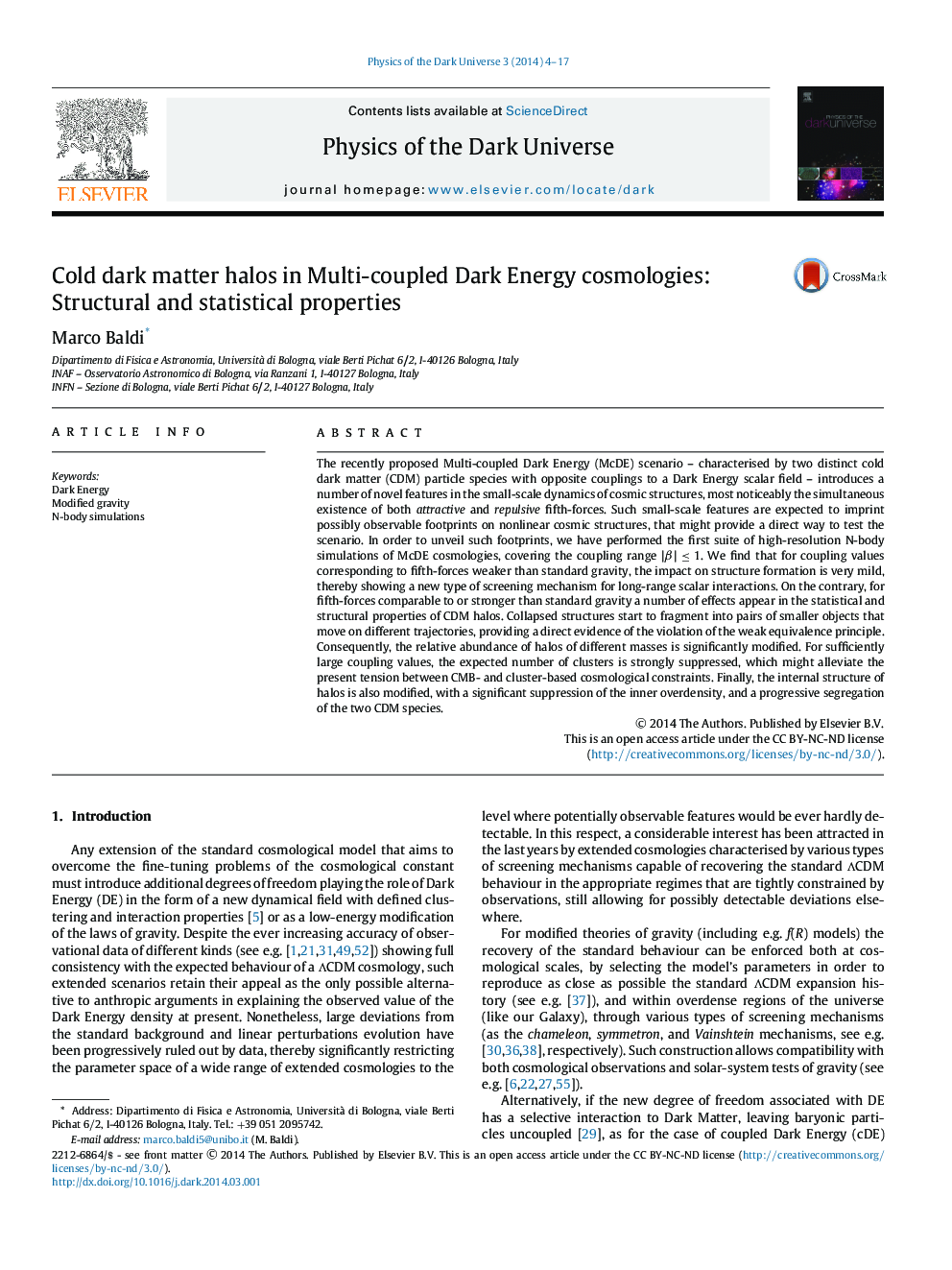| Article ID | Journal | Published Year | Pages | File Type |
|---|---|---|---|---|
| 1780815 | Physics of the Dark Universe | 2014 | 14 Pages |
Abstract
The recently proposed Multi-coupled Dark Energy (McDE) scenario - characterised by two distinct cold dark matter (CDM) particle species with opposite couplings to a Dark Energy scalar field - introduces a number of novel features in the small-scale dynamics of cosmic structures, most noticeably the simultaneous existence of both attractive and repulsive fifth-forces. Such small-scale features are expected to imprint possibly observable footprints on nonlinear cosmic structures, that might provide a direct way to test the scenario. In order to unveil such footprints, we have performed the first suite of high-resolution N-body simulations of McDE cosmologies, covering the coupling range |β| â¤Â 1. We find that for coupling values corresponding to fifth-forces weaker than standard gravity, the impact on structure formation is very mild, thereby showing a new type of screening mechanism for long-range scalar interactions. On the contrary, for fifth-forces comparable to or stronger than standard gravity a number of effects appear in the statistical and structural properties of CDM halos. Collapsed structures start to fragment into pairs of smaller objects that move on different trajectories, providing a direct evidence of the violation of the weak equivalence principle. Consequently, the relative abundance of halos of different masses is significantly modified. For sufficiently large coupling values, the expected number of clusters is strongly suppressed, which might alleviate the present tension between CMB- and cluster-based cosmological constraints. Finally, the internal structure of halos is also modified, with a significant suppression of the inner overdensity, and a progressive segregation of the two CDM species.
Related Topics
Physical Sciences and Engineering
Physics and Astronomy
Astronomy and Astrophysics
Authors
Marco Baldi,
